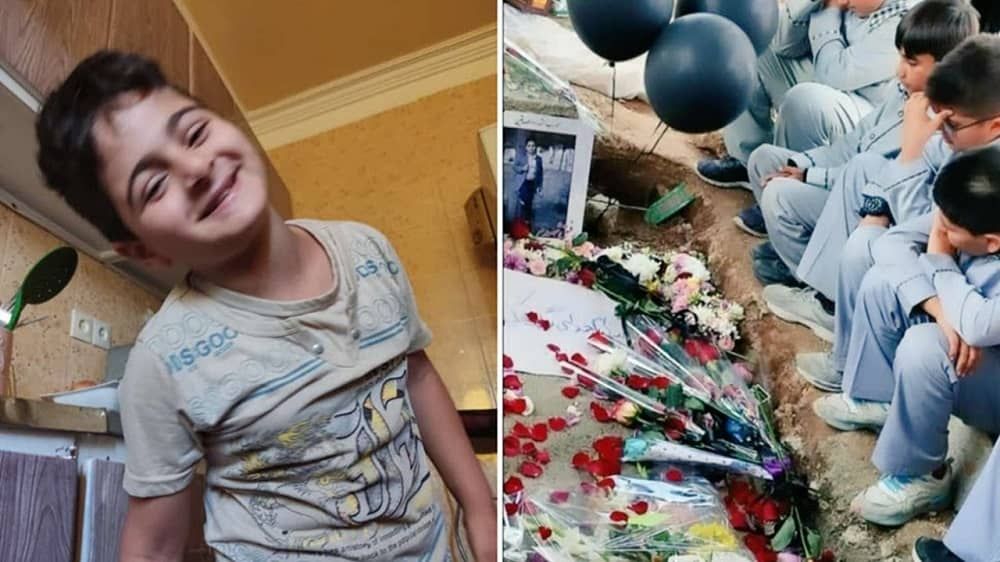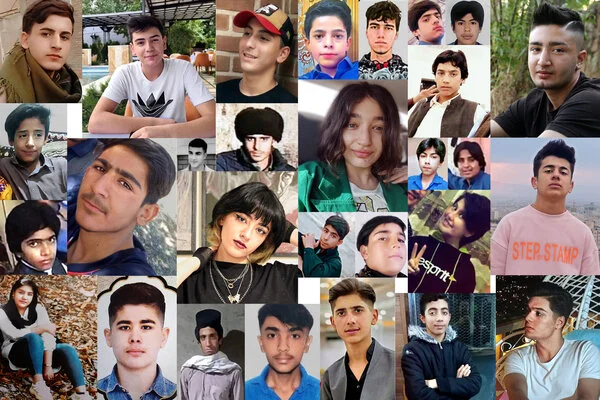Why children fall victim to mullahcracy? Reasons that shake up authority

Marking six months of the unprecedented popular uprising in Iran, sparked by the death in custody of Mahsa (Zhina) Amini, the news was revealed about the violence meted out to children arrested during and in the aftermath of protests. The research exposes the torture methods that the Revolutionary Guards, the paramilitary Basij, the Public Security Police, and other security and intelligence forces used against boys and girls in custody to punish and humiliate them and to extract forced “confessions.”
The report says that Iran’s intelligence and security forces have been involved in various horrific acts of torture, including beatings, flogging, electric shocks, rape, and other sexual violence against child protesters as young as 12 to suppress them to be engaged in nationwide protests.
Desperate but furious
All the developments show that the inability of the mullahcracy to silence the people makes them more and more aggressive. But unfortunately, as a result of their failure, children become targets of brutal punishments. Currently, the regime that is witnessing its rapid collapse, sometimes tries to exert pressure against the internal forces and sometimes against the neighbors and around as much as it can. Inside the country, the ongoing protests against the authorities undermine each pillar of the 44-year-old worn-out regime at a time. Despite this, conflicts in many cases take innocent lives and causes misery and unfortunately, the main victims of this are children again.

Since the start of intensive investigations into the Iranian authorities’ brutal crackdown on the uprising, cases of seven children have been documented in detail. The testimonies from the victims and their families have been taken, as well as further testimonies on the widespread commission of torture against scores of children from 19 eyewitnesses, including two lawyers and 17 adult detainees who were held alongside children. The victims and eyewitnesses interviewed were from provinces across Iran including East Azerbaijan, Golestan, Kermanshah, Khorasan-e Razavi, Khuzestan, Lorestan, Mazandaran, Sistan and Baluchestan, Tehran, and Zanjan.
How to cope with Iran’s Child-killing Regime?
As the uprising has attracted all age groups, consequently, the crackdown has been indiscriminate and left a large number of minors ending up killed or disappearing in the regime’s “safe houses” or dungeons.
A report by the Foreign Affairs Committee of the National Council of Resistance of Iran (NCRI), which is based on information from the MEK network inside the country, shows that at least 65 children between the ages of two and 17 have been killed.
The report gives the name and age of each victim, as well as the location in which they were murdered. It finds:
- Thirteen of the victims were girls, and 52 were boys.
- Five victims were under the age of 10, and 60 were between 10 and 17 years young.
- The victims were from 33 cities across Iran.
- The largest number of juvenile victims was reported in Zahedan, the capital of Sistan and Baluchistan Province (15) in the southeastern part of the country, followed by Tehran (9) and Piranshahr in Kurdistan Province (4).
- Most of these children were killed by gunshots, but some of them, including Sarina Ismailzadeh, Nika Shakrami, Mohammad Hossein Kamandalo, and Maedeh Hashemi, were diagnosed with suffering from cerebral hemorrhage or other forms of internal bleeding. The latter was an indication of fatal hits to their heads and other vital areas of their vulnerable bodies by the security forces.
- Some were injured due to severe blows and injuries and died after some time. One example is Armika Ghaem Maghami, who was in a coma fighting for her life for ten days before finally succumbing to her injuries.
Historical background
Enjoying systemic impunity, the regime’s 44-year rule has shown no scruples in killing children. Juveniles were among the victims of mass executions in the 1980s, and the MEK has published the names of about 800 of them so far. Furthermore, among the 30,000 political prisoners who were murdered during the genocide of political prisoners in the summer of 1988, some had been in prison since the early 1980s when they were only 13-14 years young.
On June 21, 1981, Iranian authorities brutally suppressed a peaceful demonstration of half a million people that had been organized by the MEK in Tehran. Five days later, state-run newspapers published photos of 12 female students who had been executed. The Prosecutor’s Office used those outlets to ask their families to come forward to identify them, signaling that the regime had executed them immediately after their arrest without even verifying their identities.
While the execution of individuals under the age of 18 is plainly banned by international law, it is ingrained in the legal and judicial system of the Iranian regime. Authorities do not consider a girl over the age of 9 lunar years or a boy over 15 lunar years to be a child. In fact, the Iranian regime is the only executioner of children in the world.
---
Follow us on Twitter @AzerNewsAz
Here we are to serve you with news right now. It does not cost much, but worth your attention.
Choose to support open, independent, quality journalism and subscribe on a monthly basis.
By subscribing to our online newspaper, you can have full digital access to all news, analysis, and much more.
You can also follow AzerNEWS on Twitter @AzerNewsAz or Facebook @AzerNewsNewspaper
Thank you!
